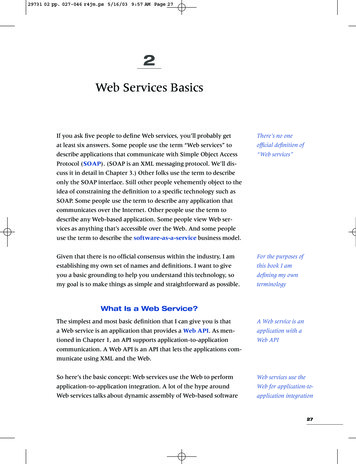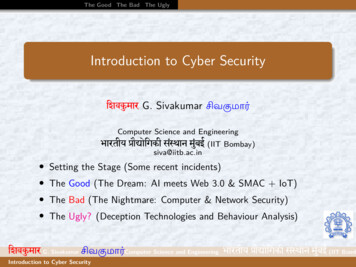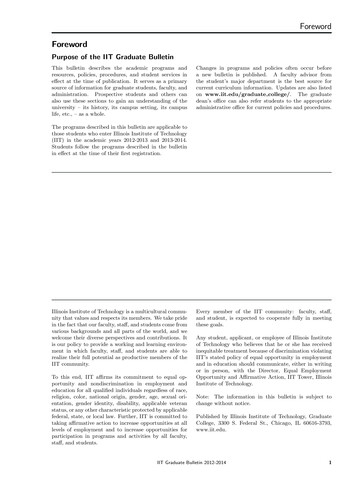
Transcription
29731 02 pp. 027-046 r4jm.ps 5/16/03 9:57 AM Page 272Web Services BasicsIf you ask five people to define Web services, you’ll probably getat least six answers. Some people use the term “Web services” todescribe applications that communicate with Simple Object AccessProtocol (SOAP). (SOAP is an XML messaging protocol. We’ll discuss it in detail in Chapter 3.) Other folks use the term to describeonly the SOAP interface. Still other people vehemently object to theidea of constraining the definition to a specific technology such asSOAP. Some people use the term to describe any application thatcommunicates over the Internet. Other people use the term todescribe any Web-based application. Some people view Web services as anything that’s accessible over the Web. And some peopleuse the term to describe the software-as-a-service business model.There’s no oneofficial definition of“Web services”Given that there is no official consensus within the industry, I amestablishing my own set of names and definitions. I want to giveyou a basic grounding to help you understand this technology, somy goal is to make things as simple and straightforward as possible.For the purposes ofthis book I amdefining my ownterminologyWhat Is a Web Service?The simplest and most basic definition that I can give you is thata Web service is an application that provides a Web API. As mentioned in Chapter 1, an API supports application-to-applicationcommunication. A Web API is an API that lets the applications communicate using XML and the Web.A Web service is anapplication with aWeb APISo here’s the basic concept: Web services use the Web to performapplication-to-application integration. A lot of the hype aroundWeb services talks about dynamic assembly of Web-based softwareWeb services use theWeb for application-toapplication integration271234567891123456789212345678933333
29731 02 pp. 027-046 r4jm.ps 5/16/03 9:57 AM Page 28Chapter 21234567890123456789012345678901234Web Services Basicsservices. It talks about the software-as-a-service business model.It talks about spontaneous discovery of new business partners.My advice is to ignore this hype. It’s possible that at some pointin the future some of these glossy images will become reality, butplease don’t let the science fiction stories distract you from realityor dissuade you from using this technology today to solve realbusiness issues.Why Web Services?Web services helpyou integrateapplicationsRather than “what?” I think the more important question is “why?”Why should you care about Web services? The answer is that Webservices mitigate the application integration crisis. They help youintegrate applications, and they do so at a significantly lower pricepoint than any other integration technology.XML and theWeb solve the”TraditionalMiddleware Blues”Web services represent a new form of middleware based on XMLand the Web. XML and the Web help solve the challenges associated with traditional application-to-application integration, whichI identified in Chapter 1 as the Traditional Middleware Blues. Tosummarize: Web services supportheterogeneousinteroperability28Traditional middleware doesn’t support heterogeneity.Traditional middleware doesn’t work across the Internet.Traditional middleware isn’t pervasive.Traditional middleware is hard to use.Traditional middleware is expensive.Traditional middleware maintenance costs are outrageous.Traditional middleware connections are hard to reuse.Traditional middleware connections are fragile.Web services address these issues. Web services are platform- andlanguage-independent. You can develop a Web service using anylanguage, and you can deploy it on any platform, from the tiniestdevice to the largest supercomputer. More to the point, any Web
29731 02 pp. 027-046 r4jm.ps 5/16/03 9:57 AM Page 29Defining “Web” and “Service”service can be accessed by any other application, regardless ofeither’s language or platform. Web services communicate usingXML and Web protocols, which are pervasive, work both internally and across the Internet, and support heterogeneousinteroperability.Web services simplify the process of making applications talkto each other. Simplification results in lower development cost,faster time to market, easier maintenance, and reduced total costof ownership. The bottom line is this: Web services allow you tointegrate your applications at a fraction of the cost of traditionalmiddleware.Web services areinexpensiveTraditional RPC-style middleware, such as RPC, CORBA, RMI, andDCOM, relies on tightly coupled connections. A tightly coupledconnection is very brittle, and it can break if you make any modification to the application. Tightly coupled connections are thesource of many a maintenance nightmare. In contrast, Web servicessupport loosely coupled connections. Loose coupling minimizes theimpact of changes to your applications. A Web service interface provides a layer of abstraction between the client and server. A changein one doesn’t necessarily force a change in the other. The abstractinterface also makes it easier to reuse a service in another application. Loose coupling reduces the cost of maintenance and increasesreusability.Web services areflexible ning “Web” and “Service”So let’s dig a little deeper into our definition. Just what is a Webservice? If we dissect the name, we can infer that a Web service hassomething to do with the Web and something to do with services. Ilike to say that a Web service is a service that lives on the Web. Thisdefinition doesn’t help us very much, though, unless we know themeaning of the terms “Web” and “service.” So let’s start there.A Web service isa service that liveson the Web29
29731 02 pp. 027-046 r4jm.ps 5/16/03 9:57 AM Page 30Chapter 21234567890123456789012345678901234Web Services BasicsThe Web is ahuge informationspace filled withinterconnectedresourcesThe Web is an immensely scalable information space filled withinterconnected resources. The architecture for the Web has beendeveloped and standardized by the World Wide Web Consortium(W3C). A Web resource is any type of named information object—such as a word processing document, a digital picture, a Web page,an e-mail account, or an application—that’s accessible through theWeb. All resources on the Web are connected via the Internet, andyou access Web resources using standard Internet protocols. Anynetwork-enabled application or device can access any resource inthe Web. Right off the bat, you can see that the Web solves one ofyour integration challenges: The Web is pervasive and providesuniversal connectivity.A service is anapplication that canbe consumed bysoftwareA service is an application that exposes its functionality through anapplication programming interface (API). In other words, a serviceis a resource that is designed to be consumed by software ratherthan by humans.“Service” refers tothe service-orientedarchitectureThe term “service” implies something special about the applicationdesign. It refers to something known as the service-orientedarchitecture (SOA). The SOA is the basic architecture used bymost RPC-style middleware systems. Chapter 3 talks about theSOA in detail.An interface hidesthe complexities ofthe internal systemOne of the most important features of the SOA is the separation of interface from implementation. A service exposes its functionality through an interface, and that interface hides the innerworkings of the application. A client application doesn’t need tounderstand how the service actually performs its work. All itneeds to understand is how to use the interface. To give you ananalogy, let’s look at a car. A car is a complicated machine, but thecar provides a set of interfaces that’s relatively simple to use. To starta car, you don’t need to know how an internal combustion engine30
29731 02 pp. 027-046 r4jm.ps 5/16/03 9:57 AM Page 31Defining “Web” and “Service”works, or even how the starter motor works. You only need toknow how to use the interface that the car supplies to start it: Turnthe key.A Web service possesses the characteristics of both a Web resourceand a service. It is an application that exposes its functionalitythrough an API, and it is a Web resource that is designed to be consumed by software rather than by a human sitting at a browser.A Web service isboth a Web resourceand a serviceUnderstanding the concept of a service is key to understanding Webservices. A service is a piece of software that does work for othersoftware. In most circumstances, a service runs on a server, waitingfor an application to call it and ask it to do some work. In manycases services don’t provide any type of human interface, and theonly way to access the service is through its API.A service is softwarethat does work forother softwareA service can perform system functions or business applicationfunctions. For example, a file service can create, find, save, ordelete a file. A stock quote service can retrieve the current ask andbid prices of an equity.A service canperform system orbusiness functionsAll client/server technologies rely on this basic concept of a service.A service is the business or system application that plays the part ofthe server in a client/server relationship. Print servers, file servers,database servers, Web servers, and application servers are allexamples of service-oriented systems.A service playsthe role of serverin a client/serverrelationshipAny business application that exposes its capabilities through anAPI is a service. Business application services often run in an application server. An application server manages and coordinates theutilization of all resources available in a shared, multiprocessingenvironment, enabling optimized performance, scalability, reliability, and availability.Application servicesoften run in anapplication server123456789112345678921234567893333331
29731 02 pp. 027-046 r4jm.ps 5/16/03 9:57 AM Page 32Chapter 21234567890123456789012345678901234Web Services BasicsFigure 2-1: A servicecan be shared bymany differentBrowserClientWeb StoreSubmapplications.it OrdeBrowserClientPortalDesktopClientReportrGet OrderStatusList Back Orderstoryer HisDesktopClientSpreadsheetClientstomet csA service is ashared resourceYou often need this type of scalability because many different userscan share a single service. A service is a shared resource. One reason you might want to design a business application as a service isto consolidate your efforts and reduce duplicated work. If there is aparticular piece of functionality that many of your applicationsneed to perform, you should build this functionality as a servicerather than reimplement the functionality in each application.One service cansupport manyapplicationsFor example, as shown in Figure 2-1, it’s much simpler andeasier to manage and maintain your order processing system ifyou have only one application service that actually processesorders. This one service can support all the different ways thatyou offer to place orders, inquire about order status, and generatereports about orders.Building ServicesYou use middlewareto create yournetwork API32To let clients access a service over the network, you must build anetwork API for the service. You generally use some type of communication middleware to create a network API. You can use atraditional middleware technology, such as RPC, DCOM, CORBA,RMI, or MOM, but all these technologies suffer from the Traditional
29731 02 pp. 027-046 r4jm.ps 5/16/03 9:57 AM Page 33Web EvolutionMiddleware Blues. If you want to make your services available toheterogeneous users across multiple systems (including the Internet) at a reasonable cost, you should use middleware technologythat supports these requirements.Web services represent a new type of middleware that relies onthe Web. The Web resolves the pervasive aspects of the TraditionalMiddleware Blues.1 The Web is pervasive. The Web is free. The Webis completely vendor-, platform-, and language-independent. TheWeb uses the Internet as its native communication protocol. Webservices support easy integration, flexibility, and service reusability.Web services areWeb-basedmiddlewareWeb EvolutionThe Web was originally created to support interactive communication. People use the Web to communicate with other people and toaccess information. You use e-mail and instant messaging to converse with friends and colleagues. You use a browser to accessinformation.The Web wasdesigned forinteractivecommunicationIn the early days of the Web, a Web site was simply a set of staticpages that were stored in files. You could view only the text andpictures contained in these files. To change what users saw, a Website operator had to edit the files. Soon we realized that we couldalso use the Web to access dynamic information. When you linkto a dynamic page, the Web server doesn’t merely display a file.Instead it calls an application that dynamically generates and renders the requested information. The introduction of this techniquemarked the point when the Web evolved to allow people to talk toapplications.A dynamic Web siteallows people to talkto applications1 Theother Traditional Middleware Blues tend to be a function of tightly coupledconnections. Web services solve these issues using XML. Chapter 3 discusses XML.331234567891123456789212345678933333
29731 02 pp. 027-046 r4jm.ps 5/16/03 9:57 AM Page 34Chapter 21234567890123456789012345678901234Web Services BasicsWeb services allowapplications to talkto applicationsWeb services represent the next step in the Web’s evolutionbecause they allow applications to talk to applications. Web-basedapplication-to-application integration allows us to exploit the universal connectivity and immense scalability of the Web, and it supports a much richer set of usage models than do human-orientedapplications.Web sites supporthumans; Webservices supportsoftwareFigure 2-2 summarizes the differences between a Web site and aWeb service. A Web site represents a group of Web resources thatare designed to be accessed by humans, and a Web service represents a group of Web resources that are designed to be accessed byapplications.A service interfacemust be structuredand unambiguousThe interfaces to these two types of applications are fundamentallydifferent. A Web site supports human clients who have a tremendous capacity to interpret the meaning of information. The sitereturns information as a Hypertext Markup Language (HTML)page—a string of text containing formatting information, oftenincluding graphics, clickable buttons, and links. A human interpretsthis information based on visual layout and physical association. Incontrast, an application can’t interpret information this way. AnFigure 2-2: A Website is designed to beaccessed by humans.A Web service isdesigned to beaccessed byapplications.Web siteWeb service34
29731 02 pp. 027-046 r4jm.ps 5/16/03 9:57 AM Page 35Understanding the Scope of Web Servicesapplication needs unambiguous information. It needs to knowwhat programmatic functions are available, and it needs to knowhow to structure and interpret the data being exchanged. A WebAPI defines these programmatic functions and data structures in acompletely unambiguous way.Defining Characteristics of Web ServicesA Web service exhibits the following defining characteristics: A Web service is a Web resource. You access a Web serviceusing platform-independent and language-neutral Webprotocols, such as HTTP. These Web protocols ensure easyintegration of heterogeneous environments.A Web service provides an interface—a Web API—that can becalled from another program. This application-to-applicationprogramming interface can be invoked from any type of application. The Web API provides access to the application logicthat implements the service.A Web service is typically registered and can be locatedthrough a Web service registry. A registry enables serviceconsumers to find services that match their needs. These service consumers may be humans or other applications.Web services support loosely coupled connections betweensystems. Web services communicate by passing XML messages to each other via a Web API, which adds a layer ofabstraction to the environment that makes the connectionsflexible and adaptable.A Web service is aWeb resource thatprovides an APIUnderstanding the Scope of Web ServicesSo now that we have the basic definition down, let’s go back to thebig picture. How do you build Web services? What do you need torun Web services? How do you use Web services? Obviously thisWeb services conceptscan be divided intofour layers351234567891123456789212345678933333
29731 02 pp. 027-046 r4jm.ps 5/16/03 9:57 AM Page 36Chapter 21234567890123456789012345678901234Web Services Basicstopic covers a lot of territory. Figure 2-3 divides the scope of ourdiscussion into four basic concepts: XML and Web services technologies, Web services infrastructure, Web services, and Webservices application templates. Each layer builds on the layersbelow it.XML and Webservices technologiesprovide thefoundation forWeb servicesThe bottom layer in Figure 2-3 comprises XML and Web servicestechnologies. These technologies provide the foundation for Web services. Don’t worry about all the acronyms used in this illustration.We’ll take a closer look at these technologies in Chapters 3–5. (If youcan’t wait, you can find definitions for the acronyms in the Glossary.)Infrastructure refersto products thatimplement Webservices technologiesThe next layer in Figure 2-3 represents Web services infrastructure: products that implement the XML and Web services technologies. You use these products to build, deploy, manage, and use Webservices. Chapters 8 and 9 will take a closer look at Web servicesinfrastructure.Figure 2-3: Webservices conceptscan be divided intoWeb Services Application Templatesfour logical layers:XML and Webservices technol-CRMERPPortalEAIB2B.ogies, Web servicesWeb Servicesinfrastructure, Webservices, and Webservices rreportsStocktradingMap anddirections.Managementframeworks.Web Services InfrastructureTools andframeworksSOAPXMLContainersand serversXML and Web Services TechnologiesWSDLXML XMLXML SignatureSAML.
29731 02 pp. 027-046 r4jm.ps 5/16/03 9:57 AM Page 37Web Services Business ModelsA Web service represents an information resource or businessprocess that you have made available to other applications througha Web API. In particular, it is a resource that supports applicationto-application communication using Web services infrastructure.You can turn any piece of application code into a Web service. AWeb service can do whatever you’ve programmed it to do. Figure 2-3 lists five sample Web services: sales quote, order tracking,weather reports, stock trading, and map and directions.Web services areapplications thatcommunicate usingWeb servicesinfrastructureWeb services application templates represent the kinds of applications and initiatives for which Web services technology offerssubstantial benefits. The list of templates in Figure 2-3 is by nomeans exhaustive, but it identifies some of the more popular usesof Web services, such as portals, enterprise resource planning, customer relationship management, enterprise application integrationinitiatives, and business-to-business integration. We’ll discuss anumber of real-life Web services applications in this chapter andin Chapter 7.Applicationtemplates representsystems that benefitfrom Web servicesWeb Services Business ModelsYou may have noticed that I didn’t list software-as-a-service as aWeb services application template. That’s because software-as-aservice isn’t an application. It’s a business model in which youlicense subscription rights to access hosted software rather thanlicense the rights to deploy the software in your own organization.For example, Salesforce.com uses the software-as-a-service business model. Salesforce.com hosts a CRM system, and users pay amonthly subscription fee to use the software.Web services is not abusiness modelA lot of the early hype about Web services led many people toequate Web services with the software-as-a-service business model.The hype projects a blue-sky vision of being able to dynamicallydiscover, assemble, and consume Internet-based software services.Many people equateWeb services 45678933333
29731 02 pp. 027-046 r4jm.ps 5/16/03 9:57 AM Page 38Chapter 21234567890123456789012345678901234Web Services BasicsBut IDC predicts that the realization of this vision is at least 10 yearsaway. I view that prediction as optimistic.Web services shouldsupport your existingbusiness modelsMy point is that, except in a few rare circumstances, you don’t sell aWeb service. Instead you sell some other type of product or service,and you use Web services to help you do that. Only in very rare circumstances are Web services the focus of their own business model.Without a viable business model, it’s hard to create a business casefor Web services. For example, let’s look at Google.Google’s businessmodel is based onadvertisingGoogle is the world’s leading Web search company. Google providesa public search engine that contains an index of more than threebillion Web pages. The normal interface to this search engine is ahuman-oriented browser interface. The business model that supports this public service is advertising. Users can access the servicefor free in exchange for viewing a few ads. Google collects revenuesfrom the businesses that place the ads.The Google Webservice provides anAPI to the searchengineGoogle also provides a Web service interface to this public searchengine. It calls this Web service the Google Web APIs. You can usethese Web APIs to query the Google search engine from an application rather than from a browser. The results of the search arereturned as structured data so that the requesting application canprocess the information.Google is encouraging users to createinnovative applications using theseWeb APIsAs of the time of this writing, this Web service is still in an experimental stage. Google is encouraging developers to use their imagination to create new and interesting applications using the GoogleWeb APIs. Here are three examples:Google38 Subject monitoring: issue regularly scheduled Web searches tofind any new information on a particular subject
29731 02 pp. 027-046 r4jm.ps 5/16/03 9:57 AM Page 39Web Services Business Models Market research: issue regularly scheduled Web searches andanalyze the difference in the amount of information availableon the subject over timePlagiarism search: search for phrases from a piece of writing toensure that it is original materialResearchers and developers may be excited about the Google WebAPIs, but it’s hard to figure out what benefit Google will gain fromthis Web service other than goodwill. The Google Web APIs undermine Google’s normal business model. The Google Web APIs don’tconstitute a new service. Instead they simply provide a programmatic interface to Google’s public Web search engine. The Web APIsare free. Users are required to register, and they are limited to 1,000queries per day per user, but users of the Google Web APIs don’treceive the Google advertisements.The Google WebAPIs undermineGoogle’s normalbusiness modelThe cost of an individual Google search is minuscule. Google viewsit as a reasonable investment to give away a few million searches inexchange for the generation of goodwill. But in general, I wouldn’trecommend that you follow Google’s example. Web services shouldbe designed to support your existing business model. They shouldprovide a new or improved mechanism to sell or use an existingproduct or service.Web services shouldsupport your existingbusiness modelsKinko’sFor example, let’s look at Kinko’s, the world's leading providerof document solutions and business services. Kinko’s has offereda browser-based utility for quite a while that allows you to senddocuments from your PC directly to Kinko’s for printing. NowKinko’s wants to use Web services to make the process even moreseamless. Kinko’s plans to roll out a “File, Print . . . Kinko’s” Webservice in mid-2003. This Web service allows you to send a printjob to Kinko’s over the Internet directly from any Microsoft Office“File, Print . . .Kinko’s” will allowyou to send a printjob to Kinko’sdirectly from yourOffice application391234567891123456789212345678933333
29731 02 pp. 027-046 r4jm.ps 5/16/03 9:57 AM Page 40Chapter 21234567890123456789012345678901234Web Services Basicsapplication. The service will require you to install a small addin to Office, which will supply the client interface to the Kinko’sWeb service. After you’ve installed this add-in, “Kinko’s” willappear in your list of printers when you select File and Print . . .from the Office menu. When you select the Kinko’s print service,Office will launch Kinko’s client interface, which then presentsyou with an easy-to-use dialog box to guide you through theprocess of submitting a print job. The dialog box will help youfind a convenient Kinko’s location, select options such as staplingand binding, and specify payment, notification, and deliverymethods.You can send theprint job to anyKinko’s anywherein the worldSuppose you’re sitting in your hotel room writing a proposal inMicrosoft Word. When you’re finished, you select File, Print . . .Kinko’s. The hotel’s high-speed Internet connection sends the printjob to a Kinko’s in another city, and the proposal is delivereddirectly to your client. Kinko’s will even send you a notificationwhen the job is complete.Kinko’s Webservice supportsthe company’s corebusiness modelThe “File, Print . . . Kinko’s” Web service doesn’t compete with thecompany’s core business model. It enhances it by providing anotherway for users to submit print jobs. And it provides a level of convenience that many users will certainly appreciate.AmazonAmazon provides aWeb API to supportits marketingaffiliates40Amazon also uses Web services to enhance its core businessmodel. Amazon’s business model is based on online retail sales.Amazon is renowned for the features of its online catalog, whichprovides the primary consumer sales interface. The catalog isdesigned to be viewed by a human sitting at a browser. Amazonalso wants to make this catalog available to applications so thatits 800,000 marketing affiliates can more easily sell products forAmazon. So Amazon created a Web API for its catalog. Before itoffered this Web API, it was quite difficult to access the Amazon
29731 02 pp. 027-046 r4jm.ps 5/16/03 9:57 AM Page 41Web Services Business Modelscatalog from an application. You needed to build a screen scrapingapplication that simulated a human sitting at a browser.The new Amazon Web API allows Amazon’s marketing affiliatesto easily incorporate Amazon content and features into their Websites. Many of Amazon’s most popular search facilities—such askeyword search, ISBN search, and even “Listmania!”—are availablethrough the Web service. Now consumers can buy products fromAmazon transparently through the affiliate sites. The affiliate Website uses the Amazon Web service to search Amazon’s catalog anddisplay the results on its own site, including features such as Amazon reviews and book ratings. This free Web service is a win-winsituation for both the affiliates and Amazon. Each time a consumermakes an Amazon purchase through the affiliate site, the affiliateearns a 15% referral fee. Meanwhile Amazon expects to see aboost in product sales.1234567891123456789212345678933333Amazon hopes itsWeb service willboost book salesUPSUPS also uses Web services to promote sales. UPS provides a set ofWeb APIs called UPS OnLine Tools. Businesses can use these APIsto connect their applications directly to the UPS logistics system toadd integrated shipping, tracking, and related functionality. UPSOnLine Tools are available at no charge, and UPS provides freee-mail support. As with Amazon, this Web service offers a winwin situation. Customers appreciate the way this Web servicecan streamline their logistics process; UPS can expect to see anincrease in UPS shipments.UPS OnLine Toolsstreamline thelogistics processT-MobileSometimes Web services can help enable a new business model.T-Mobile International, a division of Deutsche Telekom, is one ofthe world’s leading international mobile communication providers.One of its service offerings, T-Mobile Online, provides a wirelessWeb portal for more than three million T-Mobile customers inT-Mobile uses Webservices to enable anew business model41
29731 02 pp. 027-046 r4jm.ps 5/16/03 9:57 AM Page 42Chapter 21234567890123456789012345678901234Web Services BasicsAustria, the Czech Republic, Germany, and the United Kingdom.As with most wireless plans, the business model is based on consumer usage.T-Mobile needsinteresting content toattract usersWhen first planning T-Mobile Online, T-Mobile realized that topromote consumer usage it needed to provide interesting contenton the portal. Recruiting content providers was critical to the success of this new venture. T-Mobile needed to make sure that it wasas easy as possible for content providers to join the network.The contentproviders needconsumer info andbilling servicesOne of the biggest challenges T-Mobile faced was figuring out a wayto give the content providers access to information about individualconsumers. Providers need this information to furnish customized,localized, useful content. Another challenge was devising an affordable micro-payment system to ensure that the content providersgot paid for their services.Web services ensureeasy contentintegrationGiven that each content provider might have a completely different IT infrastructure, T-Mobile el
a Web service is an application that provides a Web API. As men-tioned in Chapter 1, an API supports application-to-application communication. A Web API is an API that lets the applications com-municate using XML and the Web. So here's the basic concept: Web services use the Web to perform application-to-application integration.










